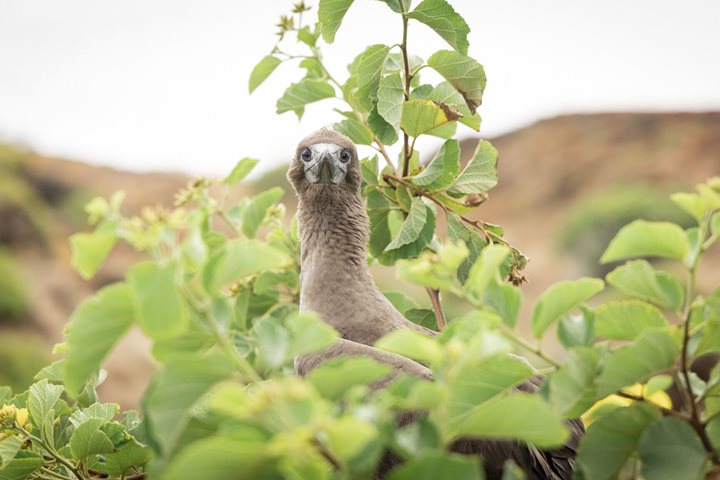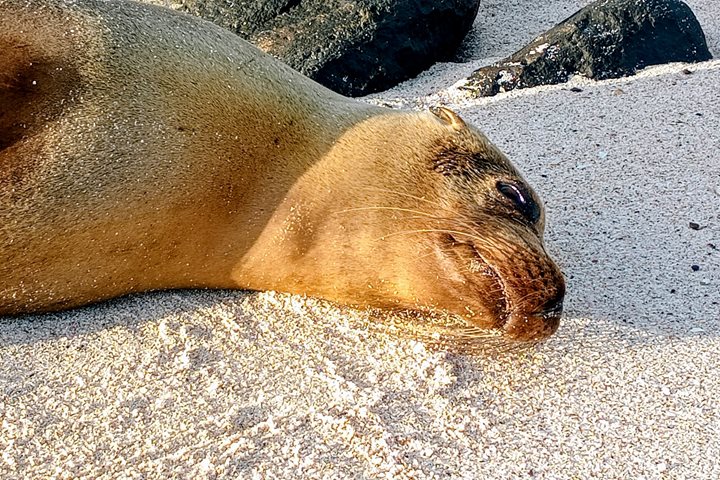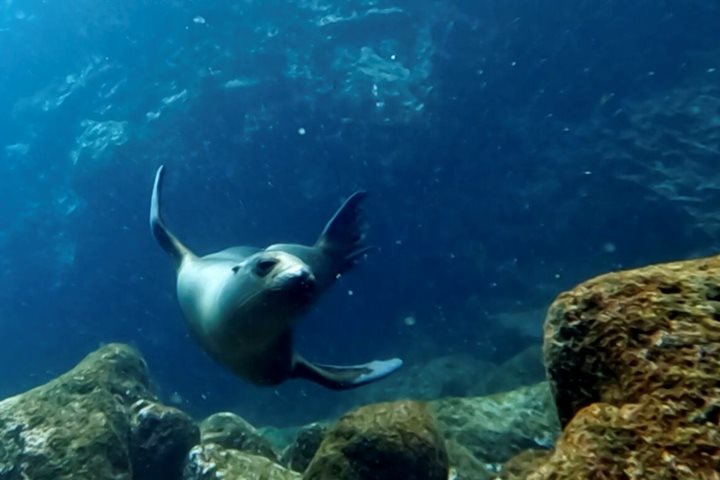The young Santiago Island is located in the central-west section of the archipelago. The volcanic landscape of our first site, Buccaneer’s Cove, was shaped by eroded walls and sharp columns of scoria, which have interesting forms. One of the most famous ones is called the Praying Monk, which sits on a bay and was well-known even before there were whalers in the region. This particular bay is full of wildlife, and our morning consisted of exploring by kayaks, Zodiac, and snorkeling. We found blue-footed boobies, herons, frigate birds, and fur seals. Even dolphins joined in the fun!
In the afternoon we visited Egas Port, a black-sand beach that leads to a trail on the rocky shoreline. This walk is beautiful not only for its abundant wildlife, but for the volcanic landscape which depicts the story and age of the island. A famous location here, known as Darwin’s Bridge, is a system of collapsed lava flows above sea level and also home to fur seals and night herons. We enjoyed a sunny afternoon of kayaking, swimming, and snorkeling on the beach and near its volcanic reef. Hikers explored the intertidal zone where marine iguanas and shore birds gave them a show. The day ended with a beautiful sunset from the ship.







